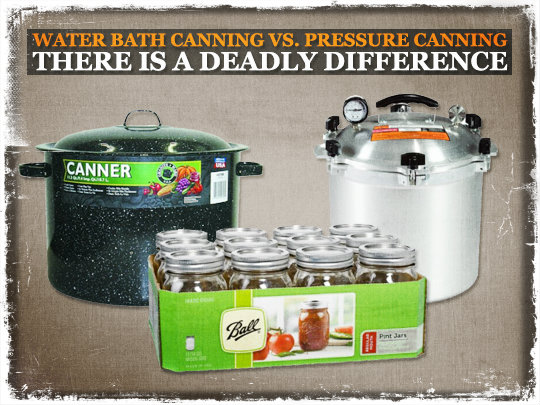
The botulinum bacteria if left to grow will produce spores and create a deadly toxin that can result in food borne botulism. The bacterium, “C. botulinum” is present in soil and in marine sediment. The spores can be found on many fruits and vegetables, but the spores are harmless at this stage, because to grow and to create toxins, they need a low oxygen, low acid environment.
The perfect low oxygen low acid environment would be in low acidic foods canned without sufficient heat to destroy the bacteria/spores. Hot water bath canning at 212° F removes the oxygen from the jars for example, but the heat is not adequate to destroy the bacteria thus, creating the perfect environment.
Temperatures between 240 and 250° F will destroy the bacteria that can cause botulism.
The bacterium cannot grow in foods when the pH level is below 4.6. Acidic foods, such as fruits, and most tomatoes and foods specifically pickled using vinegar can be canned in a boiling water bath canner. Food high in acid do not provide the proper environment for the spores to grow and thus can be canned using a boiling bath.
Meats are low in acid however, and so if canned without sufficient heat to kill the bacteria the toxin can develop. To kill the bacteria the water temperature must be between 240 and 250° F and the foods being canned must be maintained at these temperatures for a specific time. The times will be stated in the operator’s manual. The processing times will vary depending on number of jars, types of food, type of pressure canner in some cases, and elevation.
The only way to achieve the proper temperatures to destroy the bacteria is to use a pressure canner. Red meats, fish and poultry, and most vegetables, for example, must be processed under pressure for a specific time to destroy the spores.
As we stated earlier foods high in acid, which means their pH level is below 4.6 can be safely canned using a simple boiling water bath canner. Certain other foods unless the acidity level (a pH level below 4.6) is increased by adding lemon juice, citric acid, or vinegar must be processed using a pressure cooker.
Non acidic or foods low in acid include red meats, poultry, fish, and fresh vegetables with the exception of certain tomato varieties.
Now you know that all (continue reading)

